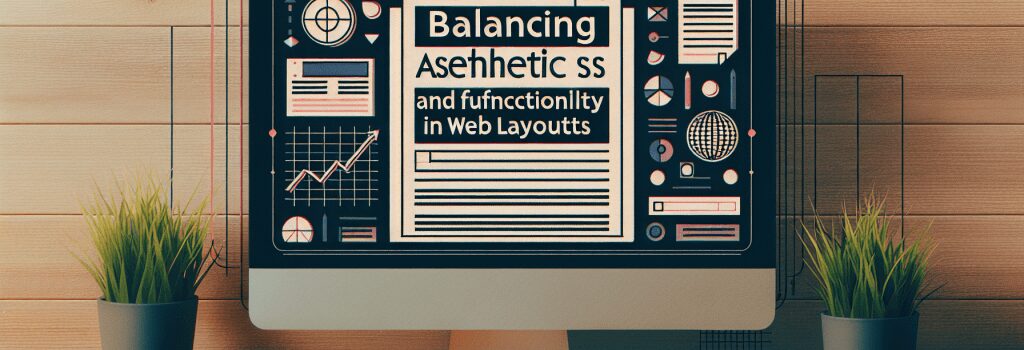Balancing Aesthetics and Functionality in Web Layouts

In the realm of web development, striking the right balance between aesthetics and functionality is paramount. A visually appealing site draws visitors in, while its functionality keeps them engaged. When focusing on CSS Styling for layout and responsive design, this equilibrium becomes even more crucial. This article delves into how developers can achieve this harmony, ensuring sites are both beautiful and usable.
Understanding the Importance of Aesthetics and Functionality
Before we dive into the strategies, it’s essential to grasp why balancing aesthetics with functionality matters. A website’s layout is not just about how elements are arranged on a page; it’s about creating an intuitive user experience while delivering content in an engaging manner. In essence, the layout should complement the site’s purpose, whether to inform, entertain, or facilitate transactions.
Aesthetics: The First Impression
Aesthetic appeal creates the first impression of your website. It encompasses color schemes, typography, and imagery—elements that draw users in. However, aesthetics go beyond just looking good. They must reflect your brand identity and communicate your message at a glance.
Functionality: The Core of User Experience
Functionality, on the other hand, pertains to how users interact with your website. It’s about making the navigation intuitive, ensuring the layout adapts to various devices (responsive design), and keeping loading times to a minimum. No matter how stunning a site looks, if users can’t find what they’re looking for easily, they’ll leave.
Achieving Balance Through CSS Styling
CSS Styling is a powerful tool in your web development arsenal, especially when it comes to layouts and responsive design. Here’s how you can utilize it to balance aesthetics and functionality:
Utilizing CSS Grids and Flexbox for Adaptive Layouts
CSS Grids and Flexbox are game-changers for creating responsive layouts. They allow you to build complex designs that adjust smoothly across different screen sizes. By using these features, you can ensure your site’s layout remains consistent and functional, no matter the device.
<h4>Crafting Visually Appealing Responsive MenusResponsive menus are a cornerstone of functional, aesthetic web design. With CSS, you can create dropdowns, sidebars, or hamburger menus that are both attractive and easy to navigate. The key is making sure these menus adjust to the screen size without compromising the site’s look or usability.
Implementing Responsive Typography
Typography plays a crucial role in both aesthetics and functionality. With CSS, you can adjust font sizes, weights, and line spacing based on screen size. This ensures readability across devices, making your content accessible and engaging for everyone.
Testing and Iteration: The Path to Perfection
Achieving a perfect balance between aesthetics and functionality isn’t a one-time task. It requires constant testing and iteration. Use tools like Google’s Mobile-Friendly Test to check your site’s responsiveness and navigability. Gather feedback from real users to understand how they interact with your site and what improvements they suggest.
In conclusion, balancing aesthetics and functionality in web layouts is a dynamic, ongoing process. By leveraging powerful CSS styling techniques for responsive design, you can create websites that not only capture users’ attention but also provide them with a seamless, intuitive experience. Remember, the goal is to make your site as welcoming and easy to use as possible, without sacrificing its visual appeal.


